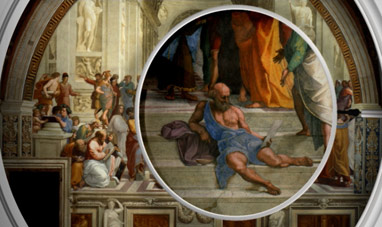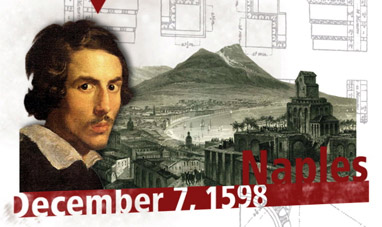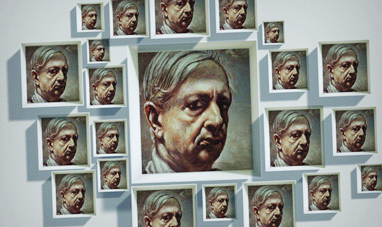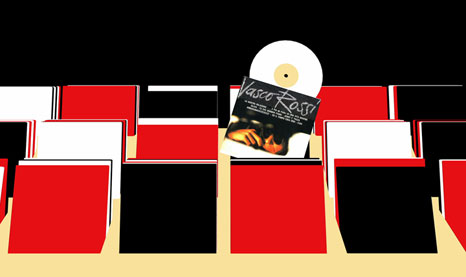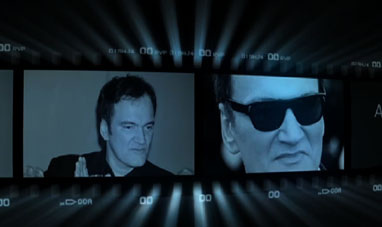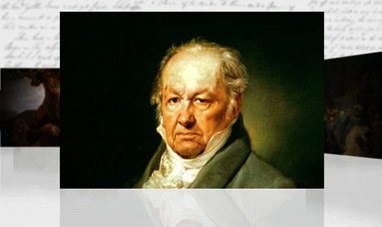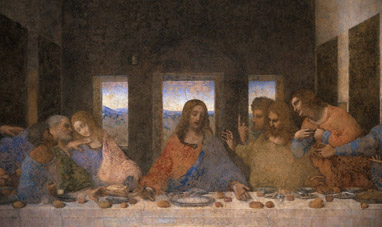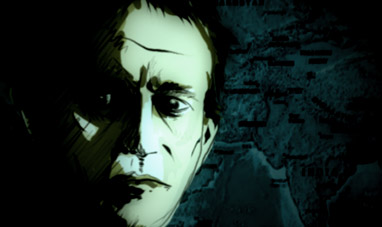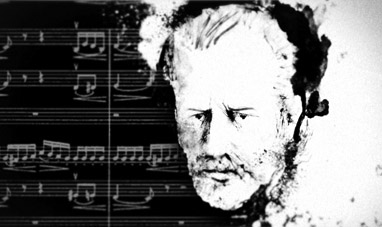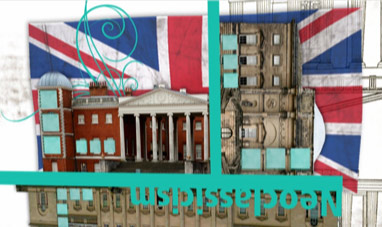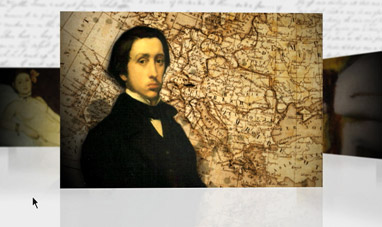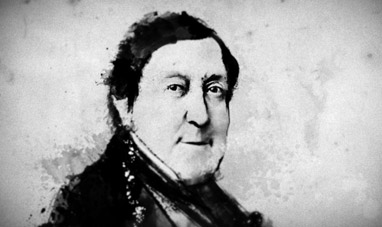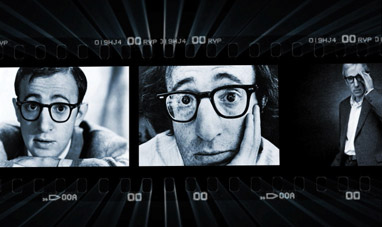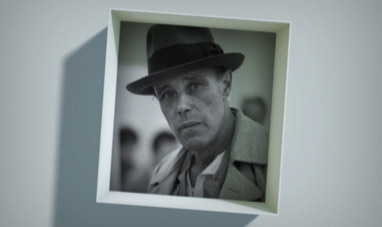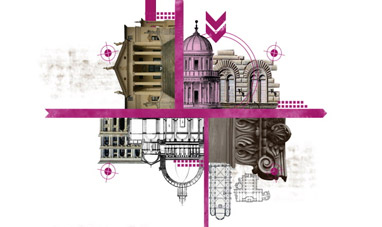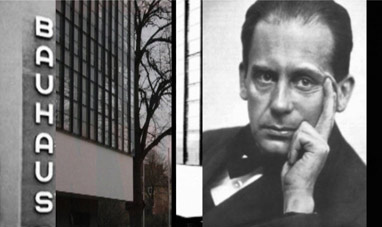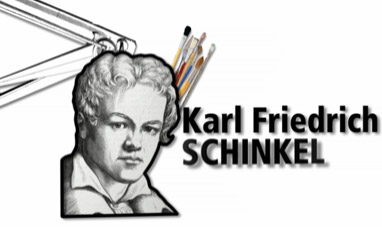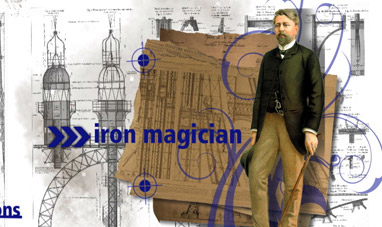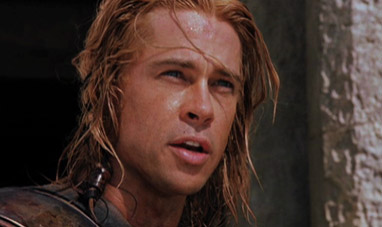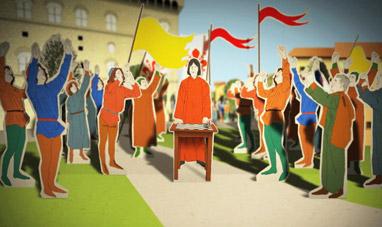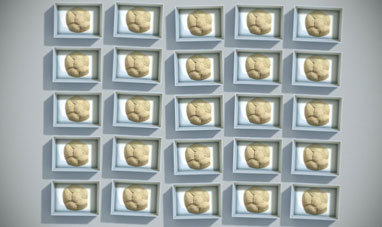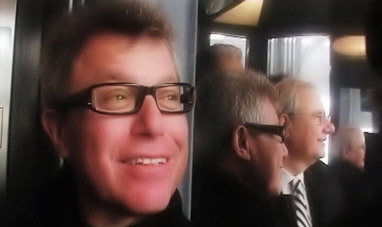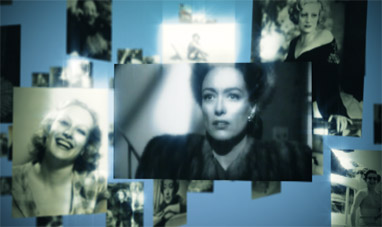Sculptor, painter and architect Michelangelo Buonarroti was one of the artists of the Italian Renaissance. The Renaissance was a period of intense artistic and cultural development that spread from Florence, Italy to all of Europe. Michelangelo was born on March 6, 1475 in Caprese, near Arezzo, to a Florentine family. At age 13, Michelangelo moved to Florence. Lorenzo de’ Medici, a patron of the arts and man of letters, ruled the city. Michelangelo apprenticed at the workshop of painter Domenico Ghirlandaio. While there, he studied the work of Giotto and Massaccio. Michelangelo left before completing his studies, feeling called to work as a sculptor. Struck by the beauty of Michelangelo’s first sculptures, Lorenzo de’ Medici invited the young artist to court. Michelangelo studied anatomy by observing classical statues in the Medici collection.
In 1496, Michelangelo was in Rome working on a Pietà, an artwork portraying the Virgin Mary cradling the lifeless body of Christ. Michelangelo sculpted the two figures from a single block. Michelangelo believed sculptures were imprisoned in marble. The artist’s task was to free them. In 1501, Michelangelo was in Florence, where he sculpted the David, a pensive portrayal of the biblical hero poised for action. Michelangelo painted the Doni Tondo to mark nobleman Angelo Doni’s wedding. Twisting torsos and lifelike gestures gave the composition dynamic energy. In 1504, Michelangelo and Leonardo da Vinci were called to paint frescoes for Palazzo Vecchio. Michelangelo represented a threat to the older master artist, and the two were longtime rivals. The frescoes were never completed. Pope Julius II called Michelangelo to Rome to sculpt his funeral monument. Michelangelo’s suspicious and turbulent disposition delayed completion of the work for many years. In 1508, Michelangelo was asked to paint frescoes for the Sistine Chapel in the Vatican. Michelangelo, who considered himself a sculptor, was hesitant. He painted the ceiling, alone, in four years, lying on his back. In the Sistine Chapel frescoes, Michelangelo’s style emerged in all its expressive strength. The bodies were on a grand scale, with muscular, twisting torsos. His groundbreaking work signaled the end of Renaissance- era natural proportions.
Around1516, Michelangelo returned to Florence to work as architect and sculptor. The artist was also politically active in republican Florence and held public office. In 1534, Michelangelo returned to Rome. On the wall behind the altar of the Sistine Chapel, he painted the Last Judgement. Eliminating both perspective and the practice of dividing his work into scenes, Michelangelo revolutionized traditional painting techniques. In his later years, Michelangelo worked as an architect. At age 72, he was called to direct the construction of St. Peter’s Basilica. Michelangelo died on February 18, 1564 while working on the Rondanini Pietà. Michelangelo's genius left an indelible mark on the history of art.
In 1496, Michelangelo was in Rome working on a Pietà, an artwork portraying the Virgin Mary cradling the lifeless body of Christ. Michelangelo sculpted the two figures from a single block. Michelangelo believed sculptures were imprisoned in marble. The artist’s task was to free them. In 1501, Michelangelo was in Florence, where he sculpted the David, a pensive portrayal of the biblical hero poised for action. Michelangelo painted the Doni Tondo to mark nobleman Angelo Doni’s wedding. Twisting torsos and lifelike gestures gave the composition dynamic energy. In 1504, Michelangelo and Leonardo da Vinci were called to paint frescoes for Palazzo Vecchio. Michelangelo represented a threat to the older master artist, and the two were longtime rivals. The frescoes were never completed. Pope Julius II called Michelangelo to Rome to sculpt his funeral monument. Michelangelo’s suspicious and turbulent disposition delayed completion of the work for many years. In 1508, Michelangelo was asked to paint frescoes for the Sistine Chapel in the Vatican. Michelangelo, who considered himself a sculptor, was hesitant. He painted the ceiling, alone, in four years, lying on his back. In the Sistine Chapel frescoes, Michelangelo’s style emerged in all its expressive strength. The bodies were on a grand scale, with muscular, twisting torsos. His groundbreaking work signaled the end of Renaissance- era natural proportions.
Around1516, Michelangelo returned to Florence to work as architect and sculptor. The artist was also politically active in republican Florence and held public office. In 1534, Michelangelo returned to Rome. On the wall behind the altar of the Sistine Chapel, he painted the Last Judgement. Eliminating both perspective and the practice of dividing his work into scenes, Michelangelo revolutionized traditional painting techniques. In his later years, Michelangelo worked as an architect. At age 72, he was called to direct the construction of St. Peter’s Basilica. Michelangelo died on February 18, 1564 while working on the Rondanini Pietà. Michelangelo's genius left an indelible mark on the history of art.





